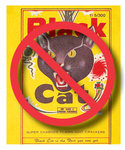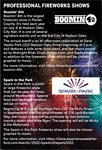

Individuals wishing to make some noise celebrating America’s independence this year will likely have to find a way other than fireworks this year.
Of course, there are still the city fireworks displays that will take place in Hudson Oaks and Weatherford. But if, as Parker County Fire Marshal and Emergency Management Coordinator Sean Hughes predicts, Texas Governor Greg Abbott extends an emergency declaration, individuals will not be allowed to discharge fireworks anywhere in the county.
“Parker County is dryer than other counties around us, including Palo Pinto (where, at the time of this article, a large wildfire was still ablaze). We have every reason to believe the governor will extend this,” Hughes said.
Earlier this week Parker County Judge Pat Deen signed an emergency declaration of a local state of disaster due to drought. It cited that because of the imminent threat of individuals discharging fireworks into dry grass, trees and brush, the discharge of any fireworks within Parker County is prohibited through midnight Thursday, June 30. However, a request has been sent to Abbott to extend the declaration and prohibition through July 5.
The release also noted that at the time of the declaration 100 percent of the county is listed as abnormally dry, and 66.85 percent is additionally classified as in severe drought. Also, the Keetch-Byram Drought Index (KBDI), maintained by Texas A&M Agrilife Research and Texas A&M Forest Service - an index that is used to determine fire potential - indicated a KBDI of 590 for Parker County as of this past Monday.*
In addition, local fire departments in the county responded to 28 wildfires within a week as of Tuesday and 61 wildfires to date for the month of June at that point.
In some places, such as Willow Park and Aledo, there already existed year-round bans on the sale and use of fireworks in any capacity within city limits.
“Our official position is just don’t do it - period,” said Willow Park Communications and Public Relations Director Rose Hoffman. “Fire conditions are very dangerous, as we see by the fire in Palo Pinto County.”
Hoffman also cited statistics from the United States Fire Marshals Association that say every year about 13,000 people are treated in hospitals for fireworks related injuries. Also, those same statistics show that fires resulting from fireworks result in about $20 million in property damages.
Hoffman said the ban on fireworks of any kind is because all have a danger connected.
“Sparklers can get as hot as a blow torch,” she said.
“Typically, every year we see somebody get hurt,” Parker County Emergency Services District 1 Fire Chief Steve Watson said.
Watson said that on an ordinary day his unit will have about 20 firefighters on duty, but “On Saturday, Sunday, and Monday we’ll have 28.”
Deen encouraged anyone wanting to enjoy fireworks to attend one of the approved public displays in Hudson Oaks or Weatherford.
The declaration does not prohibit the sale or purchase of fireworks, only the discharge. Also, there are some penalties that go along with violating the declaration, including being liable for damages, injuries, and even death.
“From a law enforcement standpoint, we would pursue charges,” Hughes said, adding that he prefers a more positive approach to staying safe as approached to writing tickets and making arrests.
And, even if the governor extends the declaration, Hughes has a simple request.
“The order may say you can discharge fireworks after a certain day, but we’re asking people not to do fireworks until we get some rain,” he said.
For more information about this declaration and order prohibiting the discharge of fireworks, contact the Parker County Fire Marshal’s office at 817-598-0969.
0 – 200: Soil moisture and large class fuel moistures are high and do not contribute much to fire intensity. Typical of early spring following winter precipitation.
200 – 400: Fuels are beginning to dry and contribute to wildfire intensity. Heavier fuels will still not readily ignite and burn. This is often seen in late spring or early summer.
400 – 600: Lower litter and duff layers contribute to fire intensity and will burn actively. Wildfire intensity begins to increase significantly. Larger fuels could burn or smoulder for several days. This is often seen in late summer and early fall.
600 – 800: Often associated with more severe drought with increased wildfire occurrence. Intense, deep-burning fires with extreme intensities can be expected. Live fuels can also be expected to burn actively at these levels.
Comments
No comments on this item Please log in to comment by clicking here